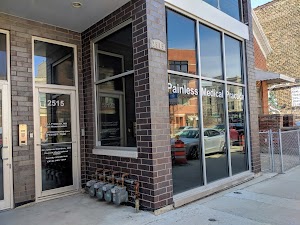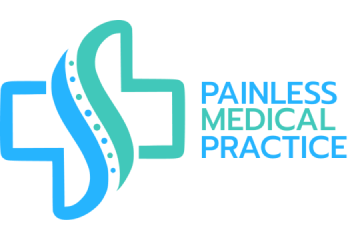Joint Injections
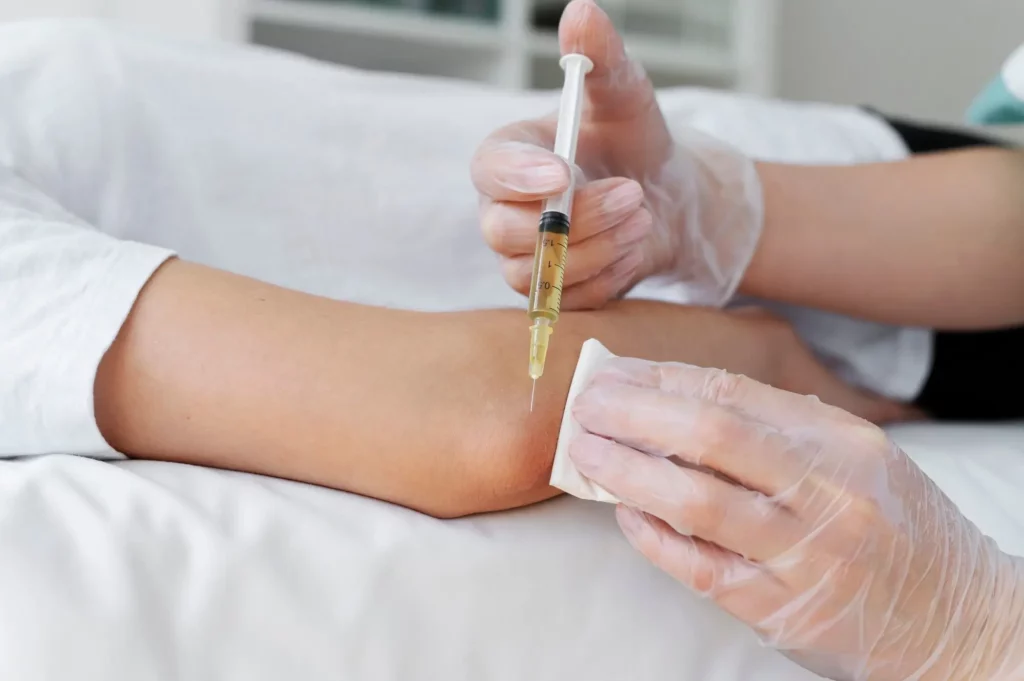
What Are Joint Injections?
Joint injections are a treatment where medication is directly injected into a joint to ease pain and inflammation. They are commonly used for conditions like arthritis, bursitis, or other joint-related issues. The joint injection often contains a mix of a local anesthetic for immediate relief and a steroid to reduce inflammation over time. These injections can help reduce discomfort, improve mobility, and delay the need for more invasive treatments like surgery.
How Do Joint Injections Work?
Joint injections work by delivering medication directly into the joint space, targeting pain and inflammation at the source. The process often includes a combination of a corticosteroid to reduce inflammation and a local anesthetic for immediate pain relief. In some cases, hyaluronic acid is also injected to improve lubrication within the joint, especially for conditions like osteoarthritis. The treatment aims to decrease swelling, reduce pain, and boost joint mobility. Ultrasound or X-ray guidance may be used for accurate placement of the injection. The effects can provide relief lasting from a few weeks to several months, depending on the condition being treated and medication used.

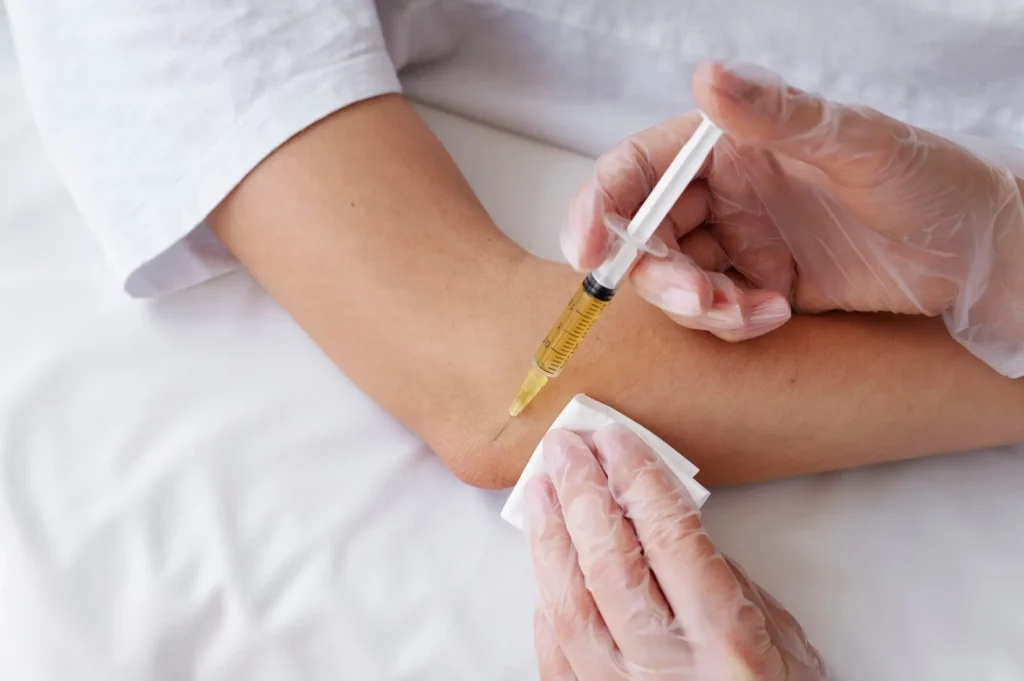
Types of Joint Injections Explained
Injection for joint pain is a common treatment option for managing pain and inflammation in joints, especially for conditions like arthritis or joint injuries. There are many different types of joint injections. Each with its own unique benefits and areas being treated.
Facet Joint Injection Details
A facet joint pain injection is a treatment used to ease pain in the spine, targeting the small joints between vertebrae. It works by injecting a combination of a local anesthetic and a steroid into the facet joint, reducing inflammation and numbing the area. Facet joint injections helps ease pain caused by conditions like arthritis, spinal stenosis, or injury-related inflammation. The injection is typically guided by imaging for accuracy and can provide relief that lasts from weeks to months.
Glenohumeral Joint Injection Details
A glenohumeral joint injection targets the shoulder joint, where the upper arm bone fits into the shoulder socket. It involves injecting a combination of a local anesthetic and a corticosteroid directly into the joint space to reduce inflammation and provide pain relief. This injection is often used for conditions like shoulder arthritis, rotator cuff injuries, or bursitis. Guided by ultrasound or fluoroscopy for precision, it can improve shoulder mobility and relieve pain for several weeks or months.
Shoulder Joint Injections Details
A shoulder joint injection is used to ease pain and inflammation in the shoulder, particularly in the glenohumeral joint. It involves injecting a combination of a local anesthetic and a corticosteroid directly into the joint space. This treatment is often used for conditions like arthritis, frozen shoulder, or rotator cuff injuries. The injection helps reduce inflammation, providing pain relief and boosting mobility. Ultrasound or X-ray guidance is typically used for better accuracy.
Hip Joint Injection Details
A hip joint injection is used to ease pain and inflammation in the hip joint, often caused by arthritis, bursitis, or injury. It involves injecting a combination of a local anesthetic and a corticosteroid directly into the hip joint space to reduce swelling and pain. The procedure is typically guided by ultrasound or fluoroscopy for accurate placement.
Lumbar Facet Joint Injection Details
A lumbar facet joint injection targets the small joints in the lower back that connect the vertebrae. It delivers a mixture of a local anesthetic and a steroid into the joint to ease inflammation and pain. This injection helps with conditions like lumbar arthritis, facet joint syndrome, or chronic lower back pain. By numbing the area and reducing swelling, it can boost movement and ease discomfort. Ultrasound or fluoroscopy is often used to provide precise injection.
Subtalar Joint Injections Details
A subtalar joint injection is used to ease pain and inflammation in the joint between the talus and calcaneus bones in the foot. It includes administering a mix of a local anesthetic and a corticosteroid directly into the joint space, targeting conditions like arthritis, subtalar joint syndrome, or persistent ankle pain. The injection reduces inflammation and provides pain relief, helping to boost mobility. The procedure is often performed with imaging guidance, such as ultrasound, for better placement.
Sacrococcygeal Joint Injection Details
A sacrococcygeal joint injection targets the area where the sacrum meets the coccyx (tailbone). This injection delivers a combination of a local anesthetic and a corticosteroid into the joint to reduce pain and inflammation. It’s commonly used for conditions like coccydynia (tailbone pain) or inflammation due to injury. The injection helps ease pain and improve function, making it easier to sit or move comfortably. Imaging guidance, like fluoroscopy, is often used to ensure accuracy.
Cervical Facet Joint Injection Details
A cervical facet joint injection is a procedure targeting the small joints in the neck, known as facet joints. It involves injecting a combination of a numbing agent and a steroid into the joint space to decrease pain and inflammation. This is typically used for conditions like cervical facet syndrome, arthritis, or neck pain from injury. The injection helps ease discomfort, improve neck movement, and is usually guided by fluoroscopy or ultrasound.
Knee Joint Injections Details
A knee joint injection delivers medication directly into the knee joint to reduce pain and swelling, especially from conditions like osteoarthritis, tendinitis, or bursitis. It typically includes a combination of a local anesthetic for immediate relief and a corticosteroid to decrease inflammation over time. Some injections may also contain hyaluronic acid to improve joint lubrication. The procedure is often guided by ultrasound for better accuracy.
Talonavicular Joint Injection Details
A talonavicular joint injection targets the joint between the talus and navicular bones in the foot, often used to treat pain from arthritis or inflammation in this area. The injection includes a local anesthetic for quick relief and a steroid to reduce long-term inflammation. It helps to ease pain and improve foot mobility, especially when pain limits walking or standing. The injection is usually performed with ultrasound guidance for precise placement.
Elbow Joint Injections Details
An elbow joint injection is used to ease pain and inflammation in the elbow, particularly for conditions like tennis elbow, arthritis, or bursitis. It involves injecting a mix of a local anesthetic and a corticosteroid directly into the joint to provide immediate pain relief and reduce inflammation over time. This can help improve joint function and mobility. The procedure is often performed with ultrasound guidance to ensure the medication reaches the area of inflammation.
TMJ Joint Injection Details
A TMJ (temporomandibular joint) injection targets the joint connecting the jawbone to the skull, often used for conditions like TMJ disorders, arthritis, or inflammation. The injection typically contains a local anesthetic and a corticosteroid to ease pain and reduce inflammation in the joint. It helps decrease stiffness, improve jaw movement, and ease pain during activities like chewing or speaking. The procedure is usually done with imaging guidance.
Results of Joint Injection Procedures
Here’s how a typical joint injection procedure works:
- You’ll visit a joint injection clinic, where the doctor will evaluate your condition.
- The injection area is cleaned with an antiseptic solution to prevent infection.
- A local anesthetic may be applied to numb the area for more comfort during the procedure.
- Using imaging guidance like ultrasound or X-ray, the doctor precisely inserts a needle into the joint space.
- The medication, usually a mix of a corticosteroid and anesthetic, is injected into the joint.
- After the injection, a small band aid is applied, and you’re monitored briefly before heading home.
- Most patients can resume light activities soon but should avoid heavy use of the joint for 12 – 48 hours.
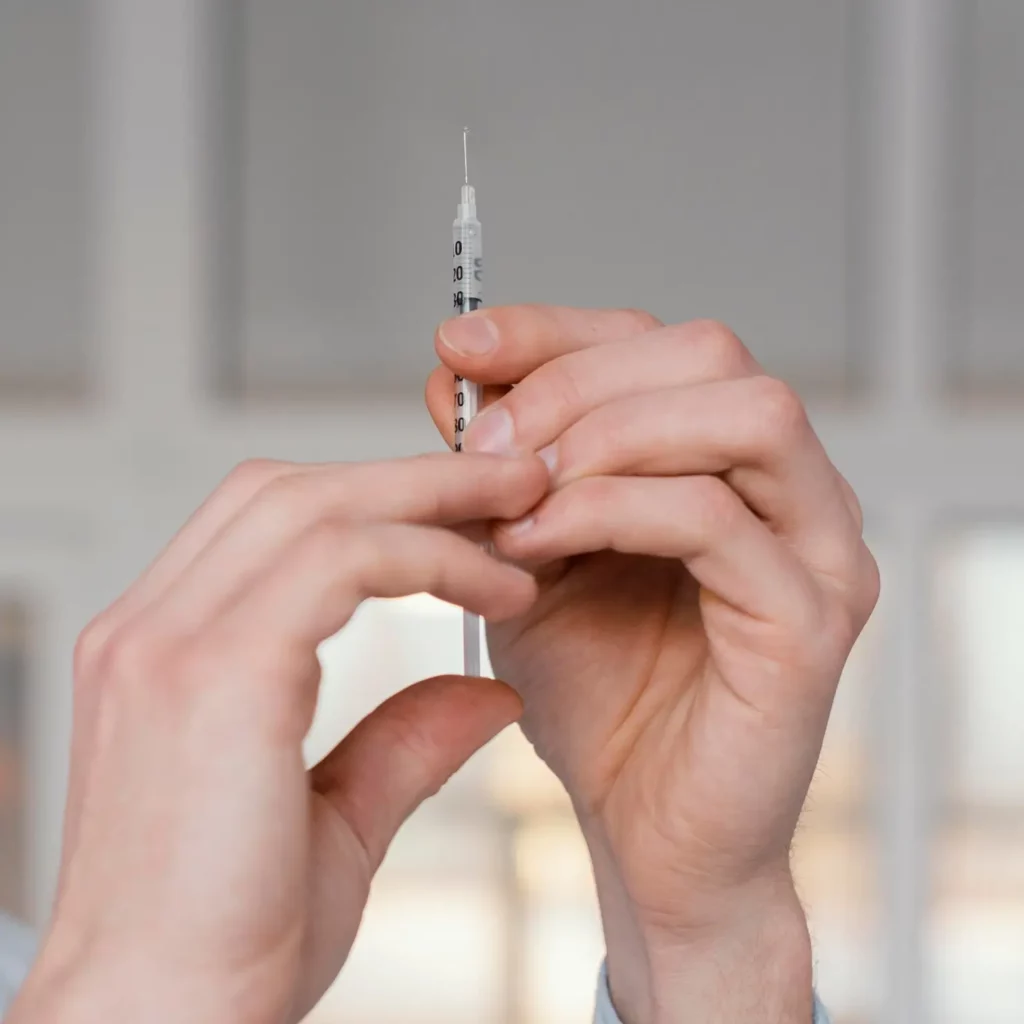
What Are the Benefits of Joint Injections?
- Immediate pain relief from the local anesthetic included in the joint injection medications.
- Reduces inflammation with corticosteroids, which helps treat conditions like arthritis or bursitis.
- Injections for joint pain improve joint mobility, making everyday activities way more comfortable.
- Non-surgical option, providing a less invasive way to manage joint pain compared to surgery.
- Injection for joint pain provides targeted treatment, as the medication is delivered directly to the problem area.
- Minimal recovery time, allowing most patients to resume light activities quickly.
- Can be used alongside other therapies like physical therapy for better results.
What Are the Side Effects of Joint Injections?
- Pain or discomfort at the injection site (cortisone flare) lasting a few days.
- Temporary swelling or bruising around the treated area.
- Skin changes, such as lightening or thinning, at the injection spot.
- Elevated blood sugar levels, especially in those with diabetes, requiring close monitoring.
- Infection risk, though rare, can cause increased redness, swelling, or fever.
- Weakened tendons or cartilage, particularly with repeated injections over time.
for your pain needs
Choose Painless Medical Practice for Joint Injections in Chicago, IL
For effective joint injections in Chicago, choose Painless Medical Practice, led by Dr. Jaroslav Tymouch. As a top pain management clinic, we offer genuine, professional care and advanced techniques to help you achieve relief. We specialize in treating both acute and chronic pain, using a range of options like X-ray-guided injections for the neck, thoracic, and lower back, epidural injection, and medial branch blocks.
We combine medications, physical therapy, stemwave therapy, shockwave therapy, and laser therapy when needed to provide the best results. Contact us today to experience the best care designed for your comfort and recovery!

Our Insurance Partners









FAQs About Joint Injection
What Is a Joint Injection?
A joint injection is a minimally invasive procedure where medication, such as corticosteroids or hyaluronic acid, is injected directly into a joint to reduce pain and inflammation or improve mobility. It’s commonly used to treat conditions like arthritis or joint injuries.
What Are Joint Injections Used For?
Joint injections are primarily used to relieve pain and inflammation caused by conditions such as osteoarthritis, rheumatoid arthritis, bursitis, and other joint-related issues. They can also help improve joint function and allow for greater mobility.
How Long Do Joint Injections Last?
The duration of relief from joint injections varies depending on the type of medication used and the condition being treated. Some patients may experience relief for several weeks, while others may benefit for several months before needing another injection.
Are Joint Injections Painful?
Most patients experience minimal discomfort during the procedure. A local anesthetic is typically used to numb the area, making the injection process relatively painless. Some soreness may occur at the injection site afterward, but it usually subsides within a day or two.
How Many Sessions of Joint Injections Will I Need?
The number of injections needed depends on the condition being treated and the individual’s response to the treatment. Some patients may require just one injection, while others might need a series of injections over time to maintain relief.
What Should I Expect After a Joint Injection?
After a joint injection, you may experience some mild discomfort or swelling at the injection site, but this typically resolves within a day or two. Many patients begin to feel relief from their symptoms within a few days, though it can take up to a week for the full effects to be noticeable.
What People Say About Joint Injections
our services before
